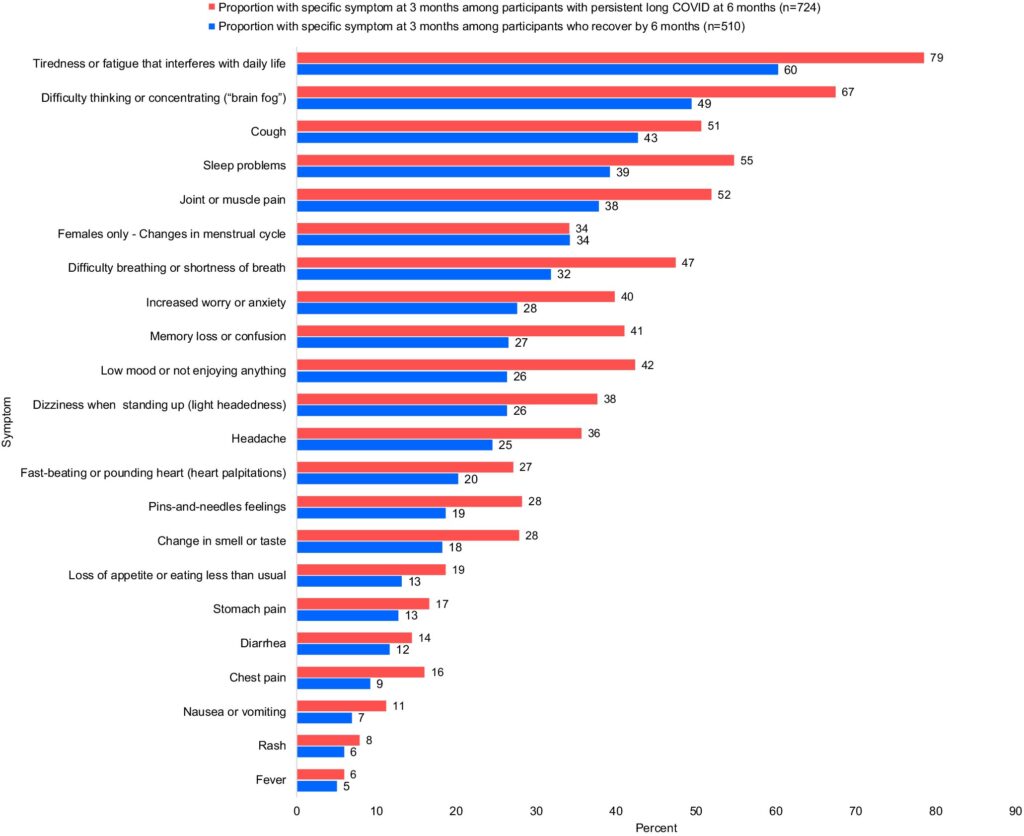
A new study conducted by The Australian National University (ANU) reveals that 56% of Australians suffering from long COVID continue to experience persistent symptoms six months after their initial infection. The study, published in the journal Epidemiology and Infection, highlights ongoing issues such as fatigue, shortness of breath, and coughing.
The research, in collaboration with the Western Australia Department of Health, follows a 2024 survey led by Dr. Mulu Woldegiorgis. This survey initially assessed 11,000 people from Western Australia three months post-COVID-19 infection, finding that nearly 18.2% had developed long COVID. The researchers continued to monitor these individuals six months after their initial infection.
Long-Term Impact and Healthcare Challenges
According to Dr. Woldegiorgis, the study aimed to understand the progression of long COVID symptoms over time. “We wanted to get a sense of the trajectory for people with long COVID. After six months, the average number of symptoms remained stable, indicating little improvement,” she explained.
Alarmingly, a third of those with persistent long COVID sought medical care for their symptoms in the month leading up to the latest survey. “Most went to their GP, highlighting the critical role of primary care in managing long COVID and the need to ensure adequate, ongoing resource allocation,” Dr. Woldegiorgis noted. “There is also emerging evidence to suggest that investment in specialty long COVID clinics may be warranted.”
Workplace and Social Implications
The study further reveals that around 32% of long COVID sufferers were not fully back to work or study at the six-month mark, a significant increase from the 17.8% reported after three months. Dr. Woldegiorgis pointed out, “Workers with long COVID face a number of challenges in returning to work, including impaired cognitive function, decreased physical endurance, and mental health issues.”
She emphasized the need for supportive workplace policies to help retain employees dealing with long COVID. “Ultimately, employers could better retain workers with long COVID by creating more supportive policies,” she suggested.
Predictors and Treatment Approaches
The research identified that having one or more pre-existing health issues at the time of initial COVID infection, along with experiencing six or more symptoms after three months, were independent predictors of persistent long COVID. Dr. Woldegiorgis stressed the importance of treatment goals focused on symptom reduction.
“For individuals experiencing long COVID, one of the goals of treatment should be to increase the proportion of patients who are on a trajectory of rapidly decreasing symptoms,” Dr. Woldegiorgis said.
She advocated for innovative models of care that can be delivered in primary care settings, such as GP practices, emphasizing patient-led self-care as a priority.
Looking Ahead: Addressing Long COVID
The findings from the ANU study underscore the need for ongoing research and resource allocation to better understand and manage long COVID. As the world continues to grapple with the long-term impacts of the COVID-19 pandemic, the insights from this study could inform public health strategies and healthcare practices globally.
Meanwhile, the healthcare community and policymakers are urged to consider the establishment of specialized clinics and support systems to cater to the unique needs of long COVID patients. As more data emerges, these efforts will be crucial in mitigating the personal and societal impacts of long COVID.
With the persistence of symptoms and the challenges faced by patients, the call for enhanced support and innovative care models becomes increasingly urgent. The road to recovery for long COVID sufferers is complex, but with targeted interventions, there is hope for improved outcomes.







